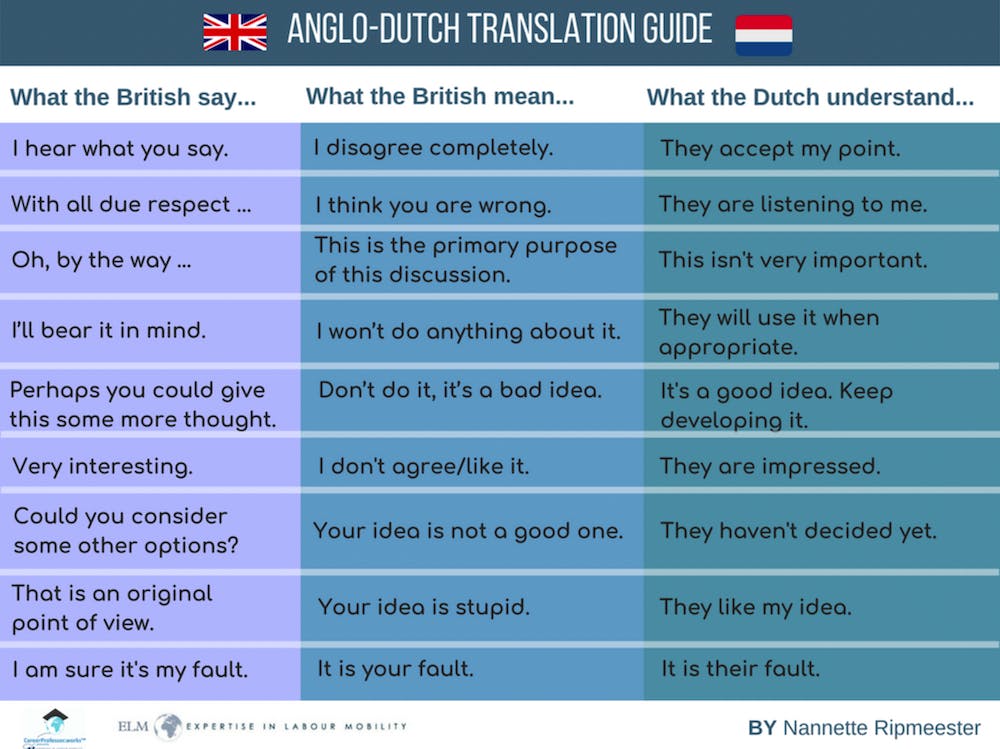I LOVE international teams! They bring so much diversity of culture, background and experiences. There’s so much to learn and there are tons of studies about how diversity in teams is good for the company.
It’s not all rose scent and moonshine though. Oh… did that not make sense in English? It does in my native language! And that’s just one silly example of miscommunication in an international team.
Communication and collaboration across cultures can become frustrating quickly. A typical example is when the British manager says “I hear what you say” when they mean “I disagree completely” and the Dutch team member would understand this as “They accept my point”. Typically Germans love their meeting hygiene: the meeting is set up with a clear agenda, starts on time and ends on time. When they have a meeting with for example someone from Egypt, who arrives 45 minutes late, the Germans will feel like the Egyptian does not respect their time. All the while, the Egyptian has no idea why the Germans are acting so grumpy.

In her book “The Culture Map”, Erin Meyer provides a framework for handling intercultural differences in business. The framework covers 8 dimensions, such as communicating, evaluating and deciding, and maps different countries along each dimension’s scale. The Culture Map helps increase awareness within international and intercultural teams and clarify expectations.

At the time of writing, we have 31 people from 16 nationalities at Checkly and the team has more than doubled in size in a year. We didn’t have any big cultural misunderstandings yet, but we wanted to avoid them as much as we can.
Our solution? During the months before our retreat, I introduced the team to each dimension of the Culture Map (in an async manner!), one at a time and asked them where they think our company culture is at. This created initial awareness and also prepared the team for the upcoming workshop so that we wouldn’t have to spend too much time on the theory and could dive into the exercise pretty much immediately. The team was divided into smaller groups and each team got 3-4 dimensions of the Culture Map. For each dimension, they were asked to mark where they think our company culture is at now and where they’d like our company culture to be.

There were some interesting findings!
Our remote and mostly async setup forces us to communicate in a way that is clear and can be understood at face value. We can’t leave much room for layered or nuanced communication where the actual message is implied and needs to be read between the lines. This is the first dimension of the Culture Map and one everyone agreed on.
But not all of the dimensions were so clear to the team, and that’s where the conversations become extra interesting! For example, Erin Meyer maps different cultures from egalitarian to hierarchical when it comes to leading. All three groups mapped our company culture to be more egalitarian or even straight in the middle between egalitarian and hierarchical. However, one group thought we should stay exactly where we are now, one thought we should become much more egalitarian and the last group thought we should become more hierarchical. Yet the explanation was the same across all groups: Everybody is and should be comfortable talking to anyone on any level, but hierarchy should be enforced when needed… yet we don’t want to get stuck in the hierarchy trap where it takes forever to get something approved.
Have a look at where the team mapped our culture and our key learnings from the exercise here.
My dream was to clearly define where Checkly falls on each dimension of the Culture Map, which we don’t have after this workshop. However, after going through the workshop and also hearing back from the team, I’m convinced it’s much more important to have these conversations and create awareness about cross-cultural differences. We won’t avoid all cultural clashes, but when they happen, they’ll be easier to recognize and thus easier to overcome.

